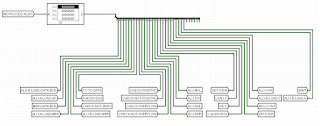I have created a custom made 16-bit CPU. I have used the LogiSim tool to create it. The CPU has three registers (A, B, and C), PC, SP, and some internal registers, such as MBR (Memory Buffer Register), IR (Instruction Register), and HIGH-BYTE register (keeps the upper 16-bit word of the 32-bit multiplication result, or a remainder when doing division).
Besides CPU, the system has 2x64KB of RAM and 16 words of text-based video memory, starting from the 0xfff0 address, and going to the 0xffff. The ALU is capable of doing all important operations including hardware-implemented multiplication and division. Both multiplication and division consume 32 cycles for 16-bit operands.
All the microcode is placed in two 32-bit ROMs:
There are around 100 instructions implemented: load/store, arithmetic, logical, shifting, jumps, calls, etc.
The CPU project is placed at the github: https://github.com/milanvidakovic/16-bit-CPU
The assembler for this CPU was forked from the original custom assembler and is also on the github: https://github.com/milanvidakovic/customasmThe output of the assembler are files in a such format that the LogiSim can load them into the RAM memory component.
The emulator was written in Java and it is capable of executing the machine code instructions which are the output of the assembler. It is also on the github:
https://github.com/milanvidakovic/16-bit-CPU-emulator
I have also created a transsembler which converts x86 assembler code made by the MS C compiler into the assembler for my custom CPU. That way, I can make a program in C and make it run on my CPU. The transsembler was written in Java and is also on the github: https://github.com/milanvidakovic/16-bit-CPU-transsembler










